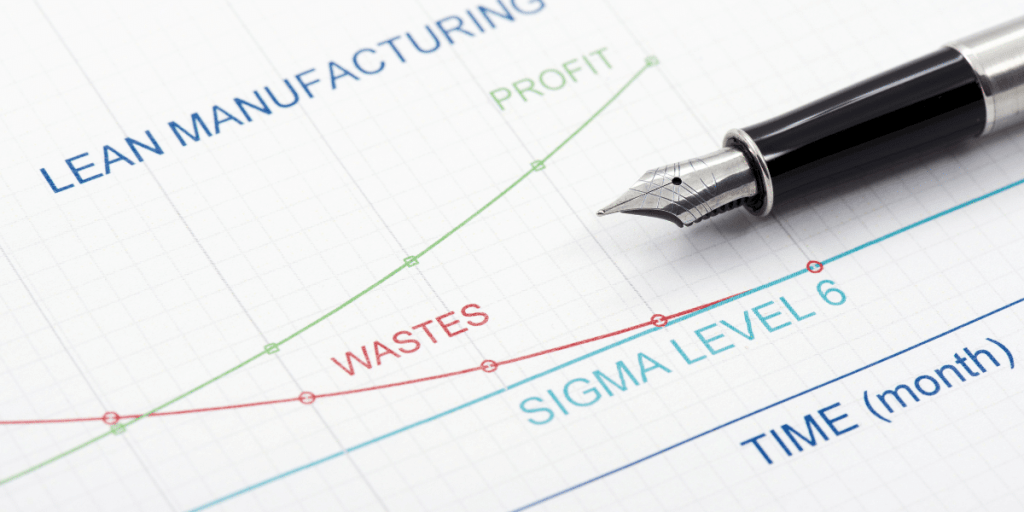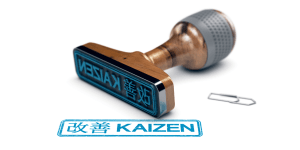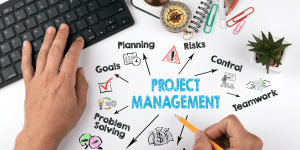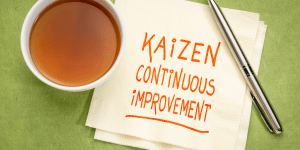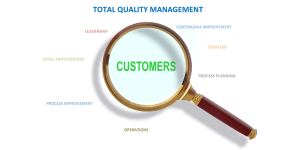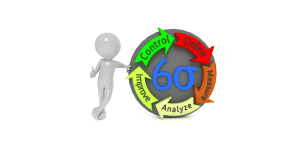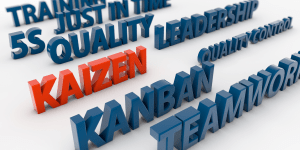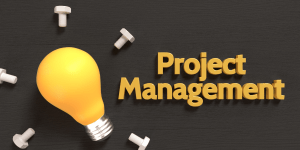Lean management methodology is a popular approach to team management that has been adopted by many companies worldwide. If you’re not familiar with this methodology, it involves the use of tools and principles to reduce waste, improve efficiency, and increase productivity. In this article, we’ll explore the definition and principles of Lean Methodology, the benefits of implementing it in team management, and some useful tips and tools to get you started.
We’ll also examine the pros and cons of using this methodology, along with some examples of companies that have successfully implemented it. Whether you’re a manager or simply looking to improve your team’s performance, this article will provide valuable insights into the world of Lean Management.
Understanding The Lean Methodology
Have you ever heard of the Lean methodology? It’s a management approach that focuses on eliminating waste and maximizing value for customers. Lean methodology has been widely adopted in various industries, including manufacturing, healthcare, software development, and more. At its core, Lean methodology is all about continuous improvement.
It aims to streamline processes, reduce costs, and improve quality by identifying and eliminating waste. Waste includes anything that doesn’t add value to the customer, such as overproduction, waiting, defects, overprocessing, excess inventory, unnecessary motion, and unused talent. One of the key principles of Lean methodology is to involve all employees in the improvement process. By empowering frontline workers to identify and solve problems, organizations can tap into their creativity and knowledge to drive innovation and change.
This approach is often referred to as “Kaizen,” which means continuous improvement in Japanese. Another aspect of Lean methodology is to focus on the customer. By understanding the customer’s needs and preferences, organizations can design products and services that meet or exceed their expectations. This customer-centric approach is also known as “Gemba,” which means the actual place where the work is done.
In summary, Lean methodology is a powerful tool for organizations that want to improve their efficiency, quality, and customer satisfaction. By eliminating waste, empowering employees, and focusing on the customer, organizations can achieve sustainable growth and success.
Definition and Principles of Lean Methodology
Lean methodology is a systematic approach to business management that emphasizes efficiency, waste reduction, and continuous improvement. It is based on the principles of the Toyota Production System, which was developed in the 1950s. The goal of the Lean methodology is to identify and eliminate any waste in the production process, resulting in a more efficient and profitable business.
One of the main principles of Lean methodology is to focus on the value that the customer receives. This means that all activities and processes should be geared towards providing the customer with the highest quality product or service at the lowest possible cost. To achieve this, Lean methodology advocates the elimination of any activity or process that does not add value to the customer. Another key principle of Lean methodology is to continuously improve the production process.
This is achieved by constantly analyzing the production process, identifying areas that can be improved, and implementing changes to eliminate waste and improve efficiency. This process of continuous improvement is known as “Kaizen”, which means “change for the better”. The Lean methodology also emphasizes the importance of teamwork and collaboration. By involving employees in the process of identifying and eliminating waste, Lean methodology promotes a culture of continuous improvement and empowers employees to take ownership of the production process.
In summary, the Lean methodology is a systematic approach to business management that emphasizes efficiency, waste reduction, and continuous improvement. It is based on the principles of focusing on customer value, continuous improvement, and teamwork. By adopting Lean methodology, businesses can streamline their production process, reduce waste, and improve profitability.
Benefits of Lean in Team Management
Lean management methodology is a popular approach to improving team efficiency and productivity. This methodology focuses on minimizing waste and optimizing processes. It is a great way to streamline team management and enhance overall performance. Here are some of the benefits of incorporating Lean in team management:
1. Improved Efficiency: By implementing Lean management principles, teams can identify and eliminate wasteful activities. This leads to faster and more efficient workflows, resulting in increased productivity.
2. Better Quality: Lean management helps teams identify and eliminate defects in their processes. This results in higher quality output and improved customer satisfaction.
3. Reduced Costs: By eliminating waste, teams can reduce costs associated with unnecessary activities. This can lead to significant cost savings in the long run.
4. Enhanced Team Collaboration: Lean management encourages teams to work together to identify and solve problems. This leads to enhanced collaboration and improved communication within the team.
5. Increased Flexibility: Lean management allows teams to adapt quickly to changing circumstances. This is particularly important in today’s fast-paced business environment, where companies need to be able to pivot quickly to stay competitive.
Overall, Lean management methodology is a great way to improve team efficiency, productivity, and collaboration. It helps teams to identify and eliminate waste, resulting in higher quality output and reduced costs. By incorporating Lean in team management, companies can enhance their overall performance and stay ahead of the competition.
Tools & Tips for Implementing Lean Management Methodology
Implementing Lean Management Methodology can be a challenging process, but with the right tools and tips, it can be much easier. Here are some essential tips and tools that can help you with the implementation:
Value Stream Mapping:
Value Stream Mapping is a tool that helps you visualize the steps involved in delivering a product or service. With this tool, you can identify the waste in your process and streamline it. By doing so, you can reduce lead time and improve quality.
5S Methodology:
The 5S methodology is a simple yet effective tool that helps you organize your workspace to improve productivity and reduce waste. It consists of five steps: Sort, Set in order, Shine, Standardize, and Sustain. By following these steps, you can create a more organized and efficient workspace.
Kaizen:
Kaizen is a Japanese word that means “continuous improvement.” It is a philosophy that focuses on improving processes by making small, incremental changes. By implementing Kaizen, you can create a culture of continuous improvement in your organization, which can lead to significant improvements in efficiency and quality.
Poka-Yoke:
Poka-Yoke is a technique used to prevent errors in a process by designing it in a way that makes it impossible to make mistakes. By implementing Poka-Yoke, you can reduce the risk of errors in your process, which can lead to higher quality and fewer defects.
Visual Management:
Visual Management is a tool that uses visual cues to help workers understand the status of a process at a glance. By using visual management, you can reduce the risk of miscommunication and improve the efficiency of your process. In conclusion, by implementing these tools and tips, you can improve your chances of successfully implementing Lean Management Methodology. By doing so, you can reduce waste, improve quality, and increase efficiency in your organization.
Pros and Cons of Lean Management Methodology
When it comes to improving business processes, Lean management methodology has become a popular choice for many organizations. This approach focuses on identifying and eliminating wasteful activities, streamlining processes, and continuously improving workflows. However, like any methodology, there are pros and cons to using Lean management.
Pros:
- Increased Efficiency: By eliminating wasteful activities and streamlining processes, Lean management can significantly increase efficiency and productivity.
- Better Customer Experience: Lean management methodology focuses on improving the customer experience by identifying and eliminating non-value-added activities that waste time and resources.
- Continuous Improvement: Lean management is a continuous improvement methodology, meaning that it is always looking for ways to improve and streamline processes.
- Employee Empowerment: Lean management encourages employee empowerment by involving them in process improvement initiatives and giving them a voice in decision-making.
Cons:
- Requires Training: Implementing Lean management methodology requires training and a change in mindset, which can be time-consuming and costly.
- Resistance to Change: Some employees may resist changes to their processes, causing roadblocks to implementing Lean management methodology.
- Not a One-Size-Fits-All Solution: Lean management methodology may not be suitable for every organization, and it may require customization to fit specific business needs.
- Focus on Short-Term Goals: Lean management methodology focuses on short-term goals, which may not align with long-term business strategies.
In conclusion, Lean management methodology can bring many benefits to organizations looking to improve their processes and customer experience. However, it is essential to weigh the pros and cons and consider the unique needs of the business before implementing this approach.
Examples of Companies That Use Lean Management Methodology
Lean Management Methodology is a popular approach that has been adopted by various companies worldwide to streamline their operations, enhance efficiency, and boost productivity. Here are some notable companies that have successfully implemented this methodology:
Toyota: Toyota is one of the pioneers of Lean Management, having developed the Toyota Production System (TPS) in the 1950s. The company has been able to achieve exceptional levels of efficiency and quality by implementing the key principles of Lean, such as just-in-time production, continuous improvement, and waste reduction.
Amazon: Amazon is another company that has embraced Lean Management to enhance its customer experience, optimize its supply chain, and reduce costs. Through the implementation of Lean principles, such as Kaizen, Kanban, and Value Stream Mapping (VSM), Amazon has been able to achieve impressive results, such as reducing delivery times, increasing inventory turnover, and improving customer satisfaction.
General Electric: General Electric (GE) is a multinational conglomerate that has leveraged Lean Management to improve the efficiency and effectiveness of its business processes. By implementing Lean principles, such as Visual Management, Standard Work, and Total Productive Maintenance (TPM), GE has been able to optimize its operations, reduce costs, and enhance customer satisfaction.
Intel: Intel is a technology company that has adopted Lean Management to streamline its manufacturing processes, enhance product quality, and reduce lead times. By implementing Lean principles, such as Continuous Flow, Pull Systems, and Root Cause Analysis, Intel has been able to improve its production processes and reduce waste.
In conclusion, these are just a few examples of companies that have successfully implemented the Lean Management Methodology to transform their operations and achieve outstanding results. By adopting Lean principles, organizations of all sizes and industries can streamline their operations, reduce costs, enhance quality, and improve customer satisfaction.
The Importance of Visual Management in Lean Management Methodology
Visual management is a key component of lean management methodology. It involves using visual aids such as charts, graphs, and diagrams to communicate information about a process or a system. The purpose of visual management is to make it easy for everyone to understand the current state of a process and to identify areas where improvements can be made.
Think of visual management as the GPS of the lean management world. Just as a GPS provides clear directions on how to reach a destination, visual management provides a clear picture of the current state of a process and what needs to be done to improve it. Without visual management, it is easy to get lost in a sea of data and lose sight of the big picture.
Visual management also plays a critical role in facilitating communication and collaboration among team members. When everyone can see the same information, it becomes easier to have productive discussions and make decisions based on data rather than opinions. Another advantage of visual management is that it helps to create a culture of continuous improvement.
By making it easy to see the current state of a process, visual management encourages team members to identify areas for improvement and come up with solutions to address them.
In conclusion, visual management is an essential tool for anyone practicing lean management methodology. It helps to create a common understanding of the current state of a process, facilitates communication and collaboration, and encourages a culture of continuous improvement.
Conclusion: Embracing Lean Management Methodology for Effective Team Management
Lean Management Methodology is a powerful tool that can help organizations streamline their processes, reduce waste, and improve team management. By focusing on continuous improvement, collaboration, and customer satisfaction, businesses can achieve higher levels of efficiency and productivity. While there are some drawbacks to this approach, the benefits far outweigh the risks.
Companies like Toyota, Nike, and Amazon have all successfully implemented Lean principles, and there’s no reason why your organization can’t do the same. Some of the key takeaways include setting clear goals, empowering your teams, embracing transparency, and investing in the right tools and technologies. By doing so, you can create a culture of success and drive positive change in your organization. So why not give Lean Management Methodology a try?
